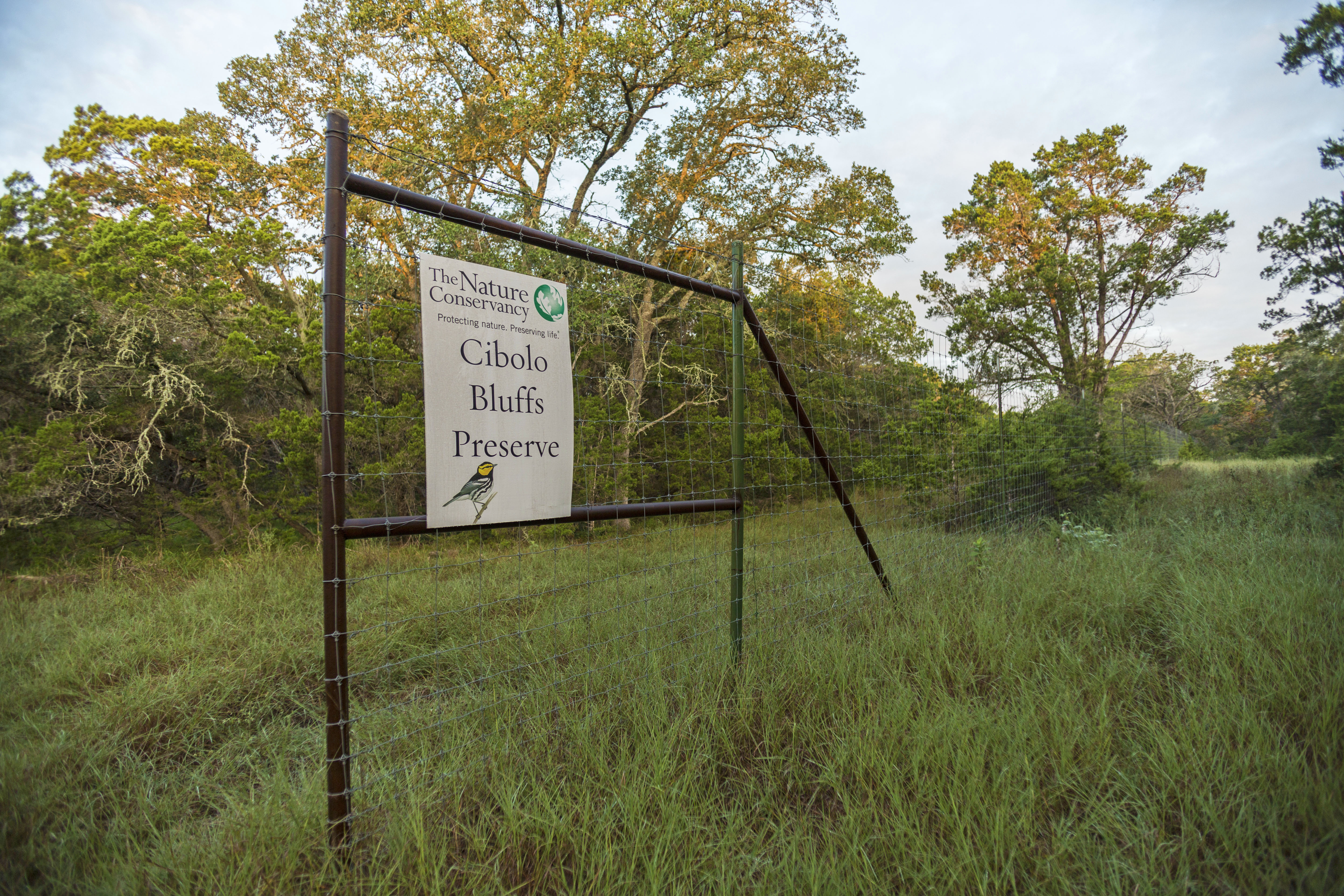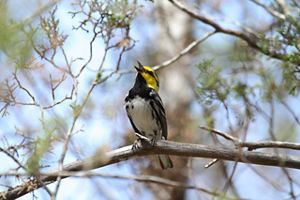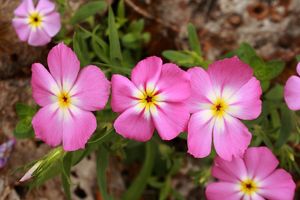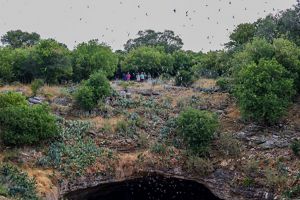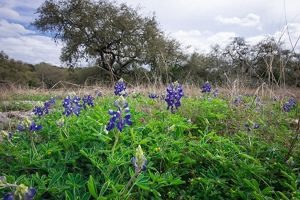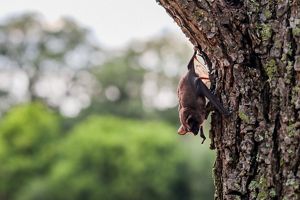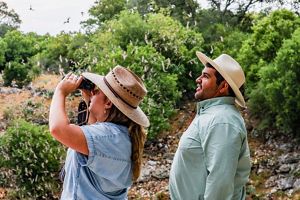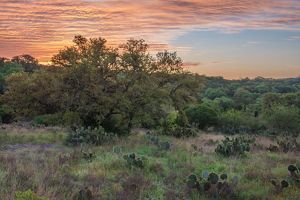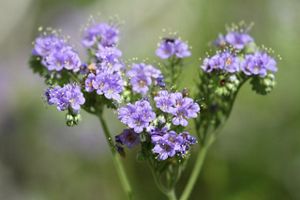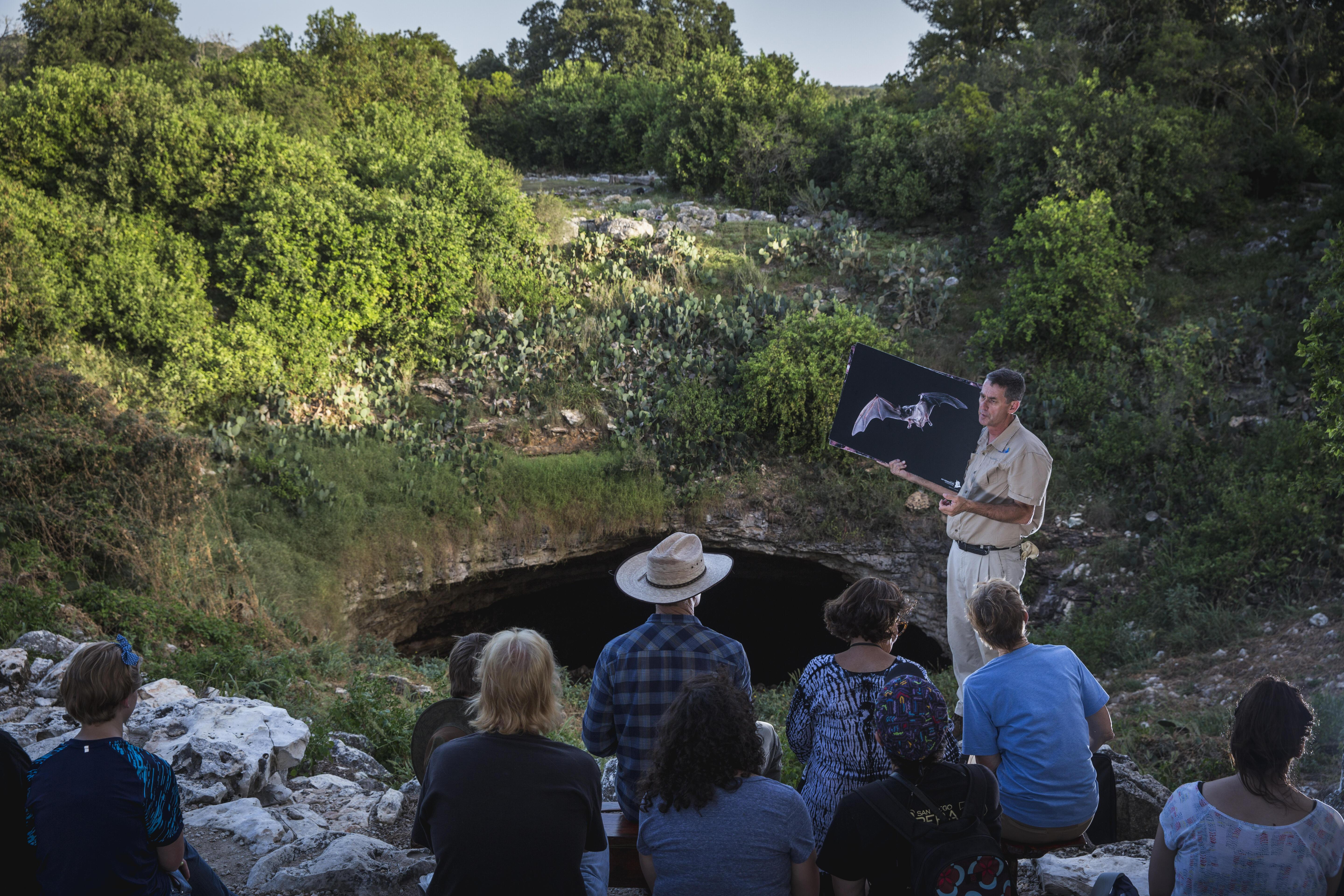Beyond managing and stewarding the preserve to enhance warbler habitat and protect flows into the Edwards Aquifer, TNC is preserving critical land around the largest maternal bat colony in the world. Cibolo Bluffs was initially established as a 1,244-acre protected parcel, but in 2014, over 1,500 acres (a portion of which was transferred to Bat Conservation International for their management) between the preserve and nearby Bracken Bat Cave were added to help protect the cave and its residents. From May to October, roughly 20 million Mexican free-tailed bats inhabit the cave. These beneficial pollinators emerge to forage for food each night, requiring significant open space for their flightpath.
Acquiring the acreage separating Cibolo Bluffs and the cave involved working with a coalition of public and private organizations, including the City of San Antonio, Bat Conservation International, the Edwards Aquifer Authority, Forestar, the U.S. Army and Bexar County. Visitors can now experience the bats’ nightly emergence at Bracken Bat Cave Preserve, which Bat Conservation International manages in conjunction with TNC staff. Ultimately, through land acquisitions and conservation easements, TNC and partners have helped protect over 5,000 acres of some of the most ecologically important land in the Hill Country along Cibolo Creek.
Cibolo Bluffs also continues to be a critical site for studies and surveys. Research conducted at the preserve by TNC staff and university students has ranged from testing effective techniques to remove invasive King Ranch bluestem to studying bird social behavior within family networks, as well as performing regular golden-cheek warbler surveys to determine any changes in the birds’ habitat or behavior.

